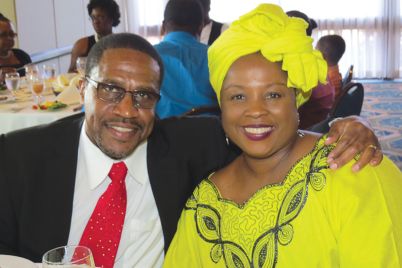Understanding the importance of human systems at work helps promote curiosity, generate positive synergy, and counter negative synergy.
BY MICHAEL F. BROOM, Ph.D. | CEO, Center for Human Systems
In a middle-sized software organization, Althea leads a team of engineers that regularly produce blocks of code that are efficient, innovative, and beautiful. Results that go beyond her expectations. She says there isn’t a superstar on her team. They are all pretty good, but no one is spectacular, just their results.
In the same company, Amir leads a team with a couple of superstars with superstar salaries. This team produces okay results but nothing specular. In fact, their projects are often late. The amount of hostile conflict within the team has Amir constantly seeking replacement members.
The teams of Althea and Amir of both synergetic. They produce results the sum of their components could not produce operating independently.
Althea’s team’s synergy is positive. Their results are greater than the sum of what the members could produce working independently. Their results are beautiful, like the music of a fine jazz quartet. Listening to each player alone is fine, but nothing special, only together does the beauty emerge.
Amir’s team’s synergy is negative. Their results are less than the sum of what the members could produce working independently. Amir is pretty clear that the time the team spends in power struggles, ego battles, and training new members is simply a waste of time.
Negative synergy is also evident in the meetings that are a regular waste of time. None of those present in those meetings or in teams like Amir’s want to be so unproductive. It is the poor quality of their interaction with each other in the meeting that creates the negative synergy.
The quality of interaction on Althea’s team is high. She has taught her team members to be curious about each other and each other’s thoughts and ideas.
Ten Ways to Use Curiosity to Create the Beauty of Positive Synergy
Encouraging a team to be curious rather than judgmental can foster a more collaborative and innovative environment. It’s popular to say, “curiosity killed the cat.” Don’t believe it. Curiosity is the path to the beauty and increased productivity of positive synergy!
Here are some strategies to install curiosity into teams:
1. Model Curiosity: Demonstrate curiosity by asking open-ended questions. Show interest in and appreciation of others’ ideas. Explore new and different perspectives.
2. Create a Safe Environment: Value and respect the ideas and perspectives of team members to promote an environment where everyone feels safe to share their thoughts and questions without fear of judgment or ridicule.
3. Encourage Questions: Promote a team norm where asking questions is valued as much as providing answers. Encourage team members to ask “why,” “how,” and “what if” questions.
4. Celebrate Learning: Recognize and reward learning and experimentation, even if it involves failures. Highlight the value of the learning process over just the outcomes.
5. Diverse Perspectives: Embrace and seek diverse viewpoints. Encourage team members to be curious about the thinking and experience behind perspectives that are contrary to their own.
6. Beyond Active Listening: Practice and promote listening for emotions and concerns. It supports empathy and understanding while forestalling judgment. Do not allow interrupting to support listening before reactions.
7. Feedback: Develop an understanding of feedback as information that tells us if we’re on track or not toward team goals. This way, feedback implies no judgment. Its focus is on productivity rather than criticism.
8. Learning Mindset: Encourage a learning mindset. Focus on the fact that learning from our differences is where creativity and synergy begin. Frame difficulties and conflicts as opportunities to learn rather than problems to avoid. It is the interaction of learning from our differences that is the font of creativity and synergy.
9. Reflective Practices: Encourage team members to engage in reflective practices, such as journaling and team debriefs, to think about their experiences and what they can learn from them.
10. Mindfulness Training: Incorporate mindfulness practices that help team members become more aware of their own biases and judgments. This can help them approach situations with a more open mind.
Implementing these strategies can help shift the team norms toward curiosity and away from judgment, leading to the collaboration that is at the heart of synergy — its beauty and enhanced productivity.
Leaders have ignored or missed that groups of people interacting together are systems of positive or negative synergy. Seduced by the western insistent focus on the individual, we fail to understand or see human systems.
When we understand how important the quality of relationships with human systems are, we give ourselves the opportunity to use the strategies that promote curiosity to generate positive synergy and counter negative synergy when it occurs.
 Michael Broom is an organizational psychologist with 45 years of experience with various people and organizations. Formerly of Johns Hopkins University, he is a Lifetime Achievement Award honoree of the OD Network and the author of “The Infinite Organization” and “Power, The Infinite Game.”
Michael Broom is an organizational psychologist with 45 years of experience with various people and organizations. Formerly of Johns Hopkins University, he is a Lifetime Achievement Award honoree of the OD Network and the author of “The Infinite Organization” and “Power, The Infinite Game.”
Contact Dr. Broom for a free hour consultation at chumans.com. You’ll be surprised at the difference a single hour can make! Email him at michael@chumans.com for more info.








